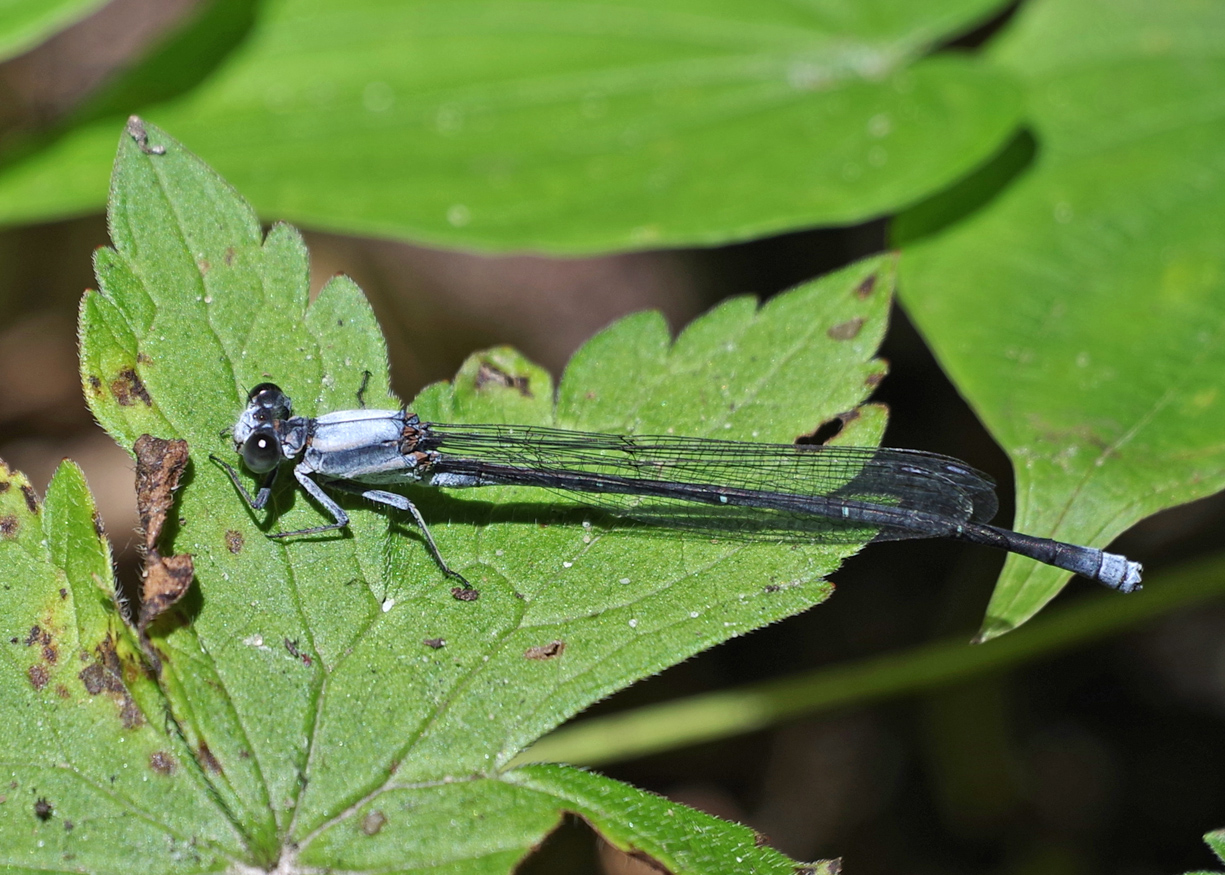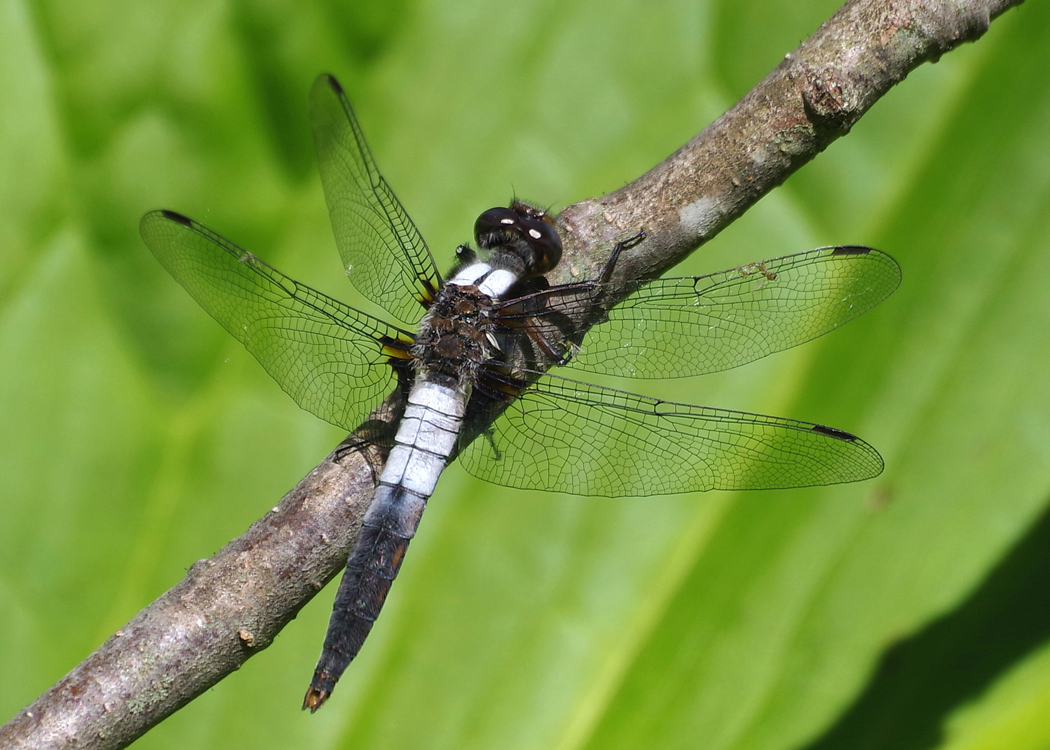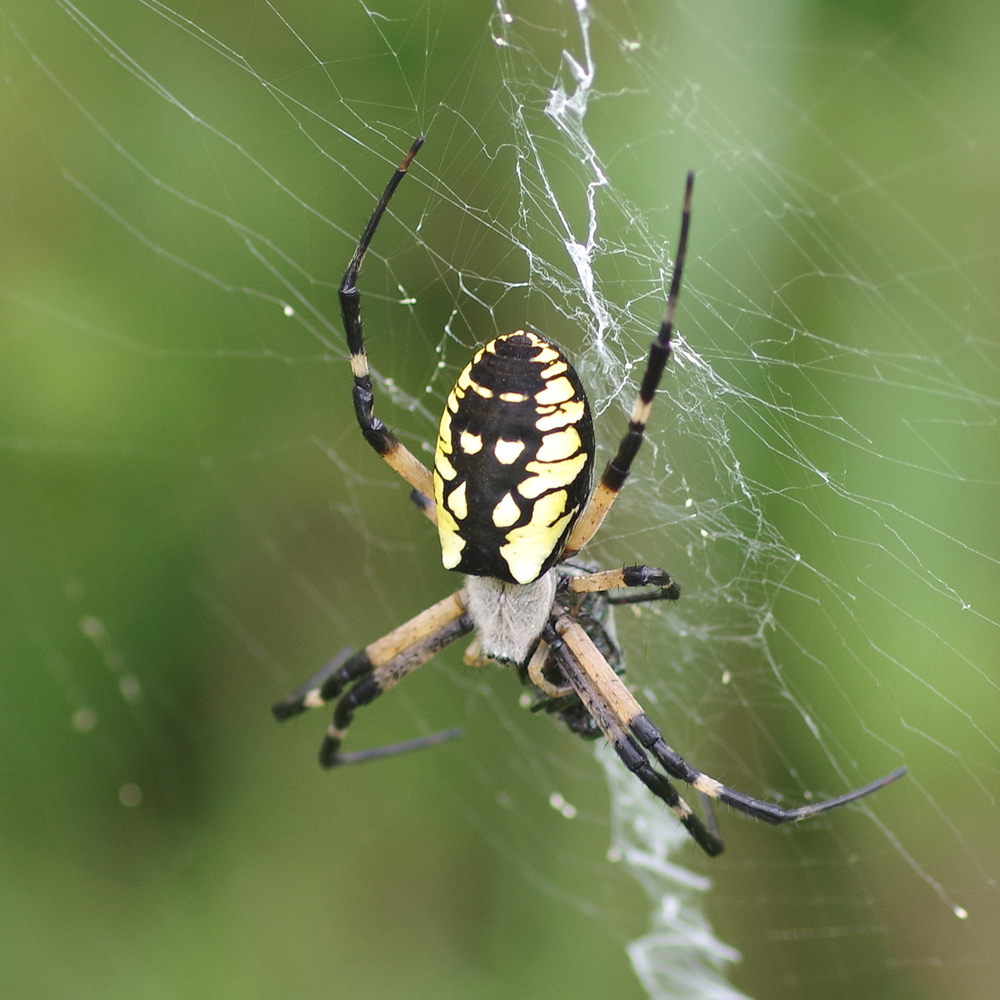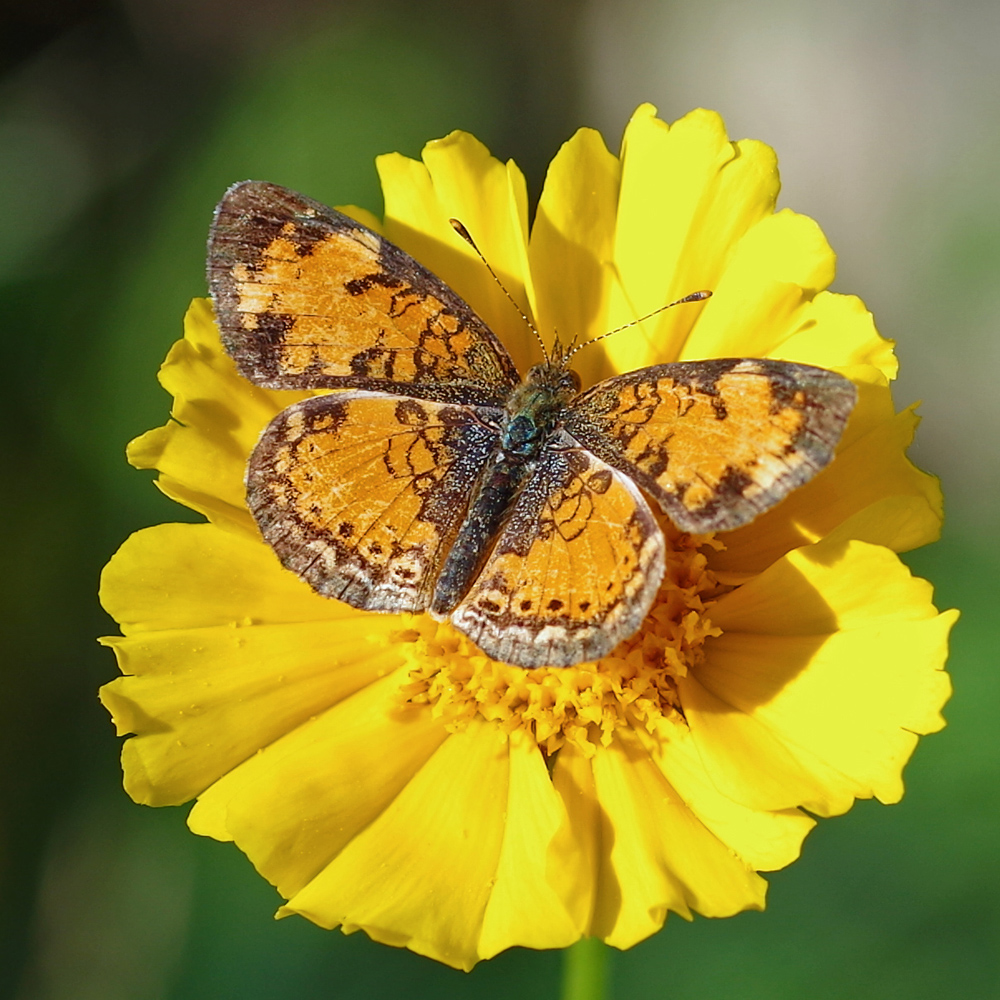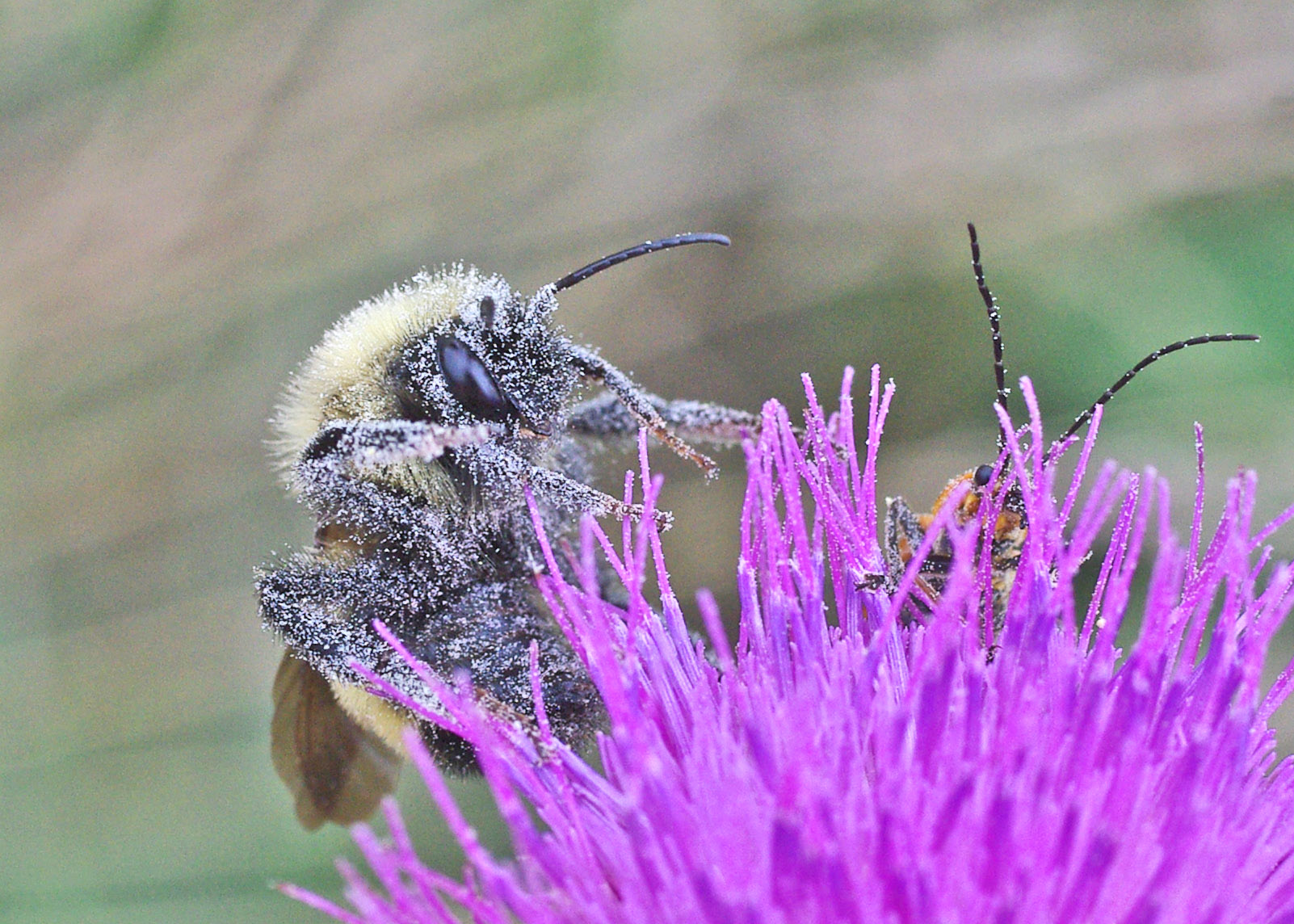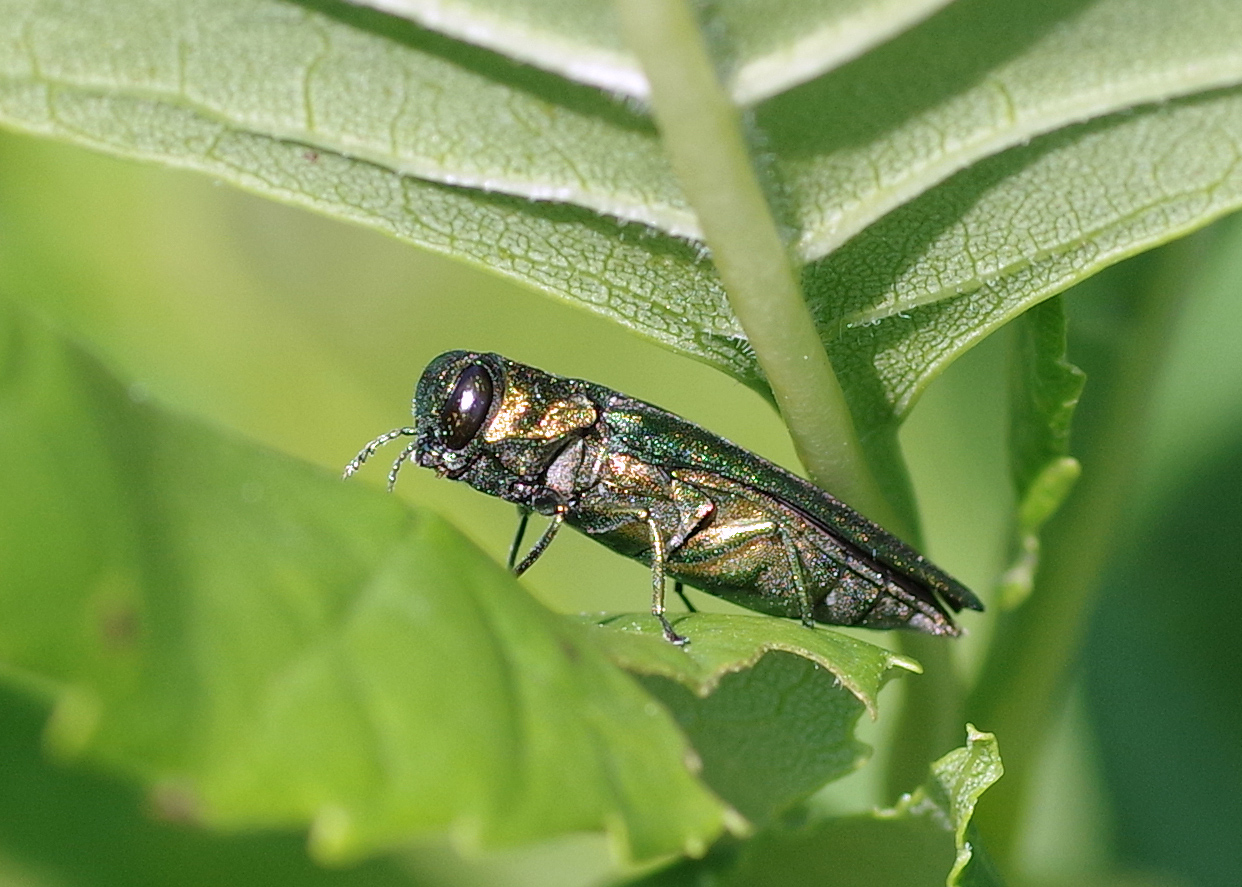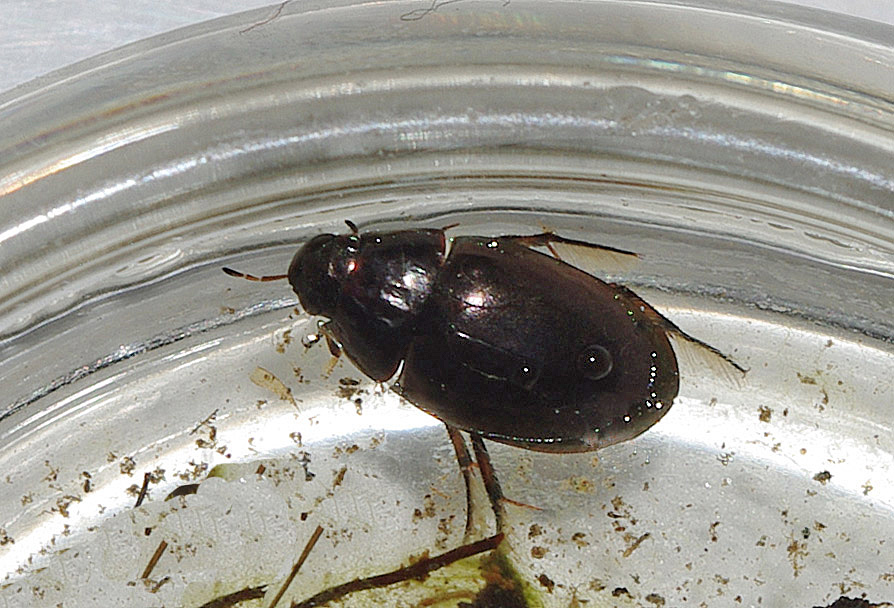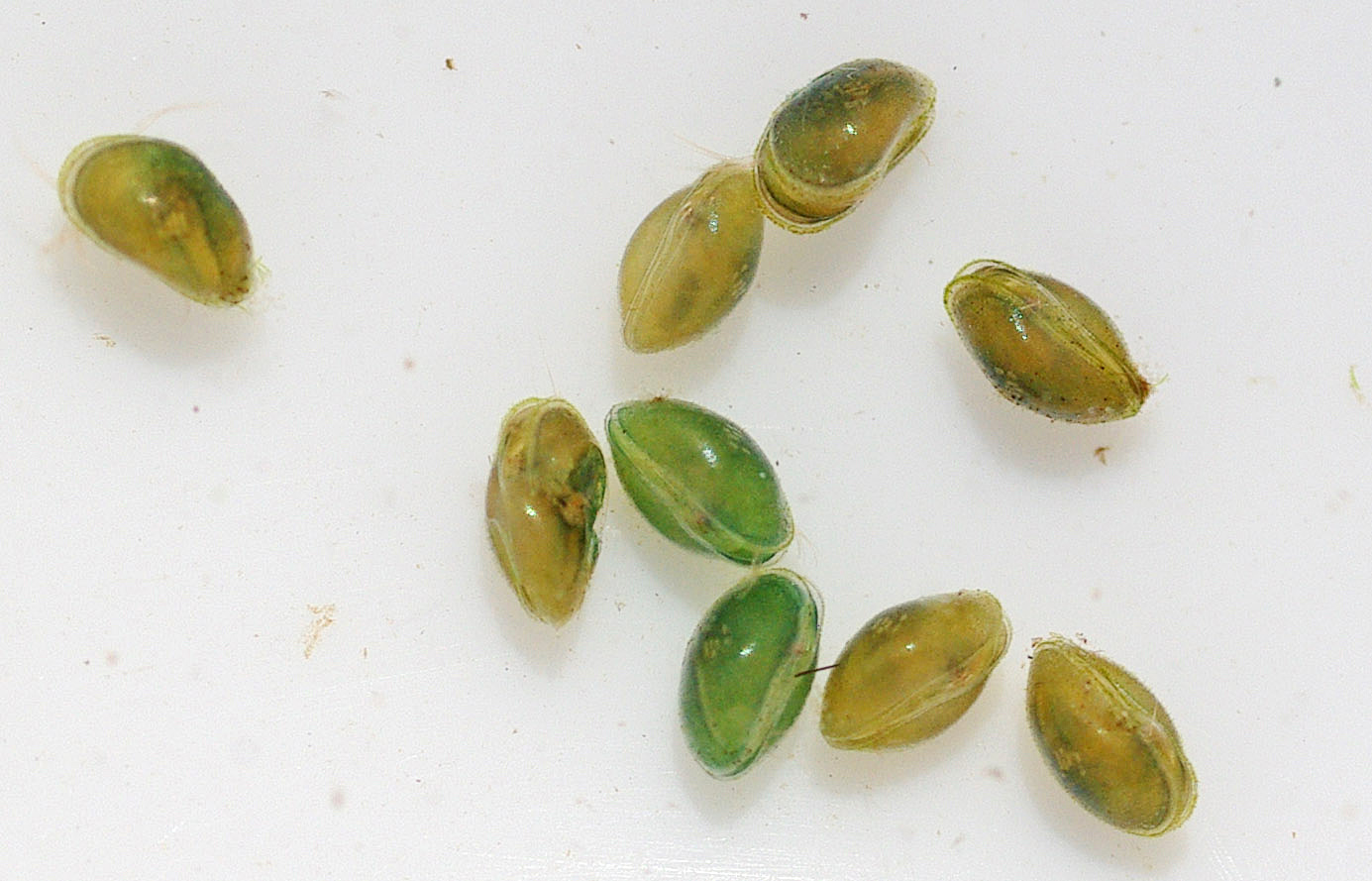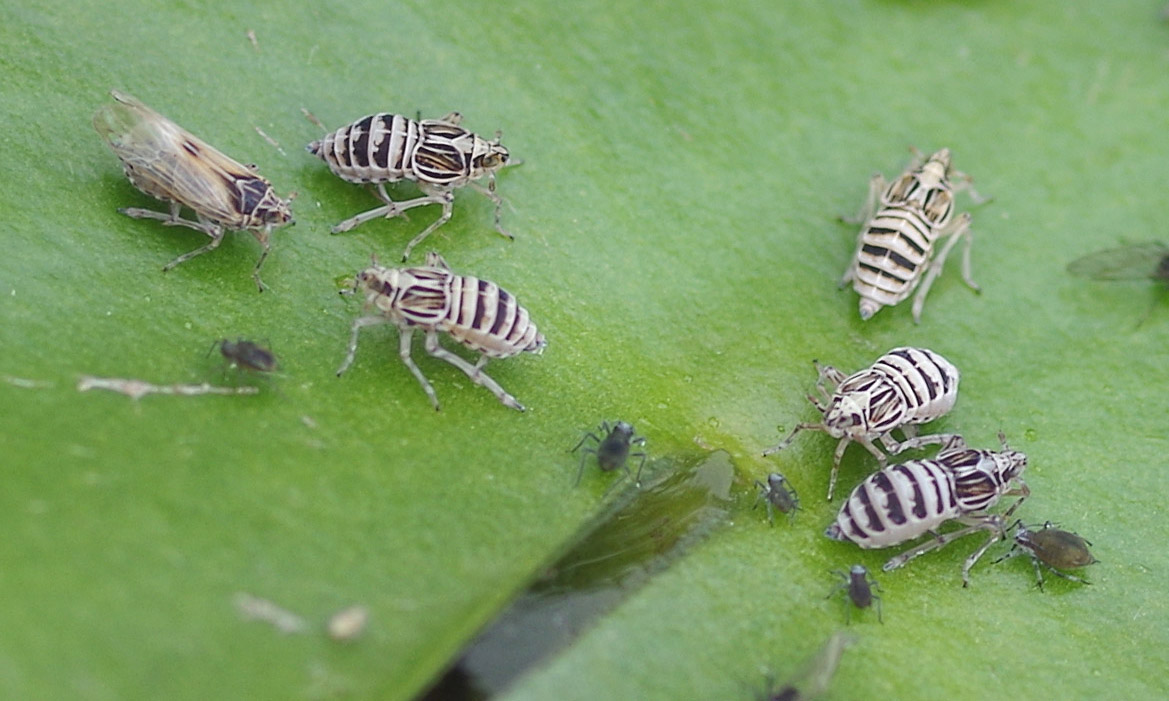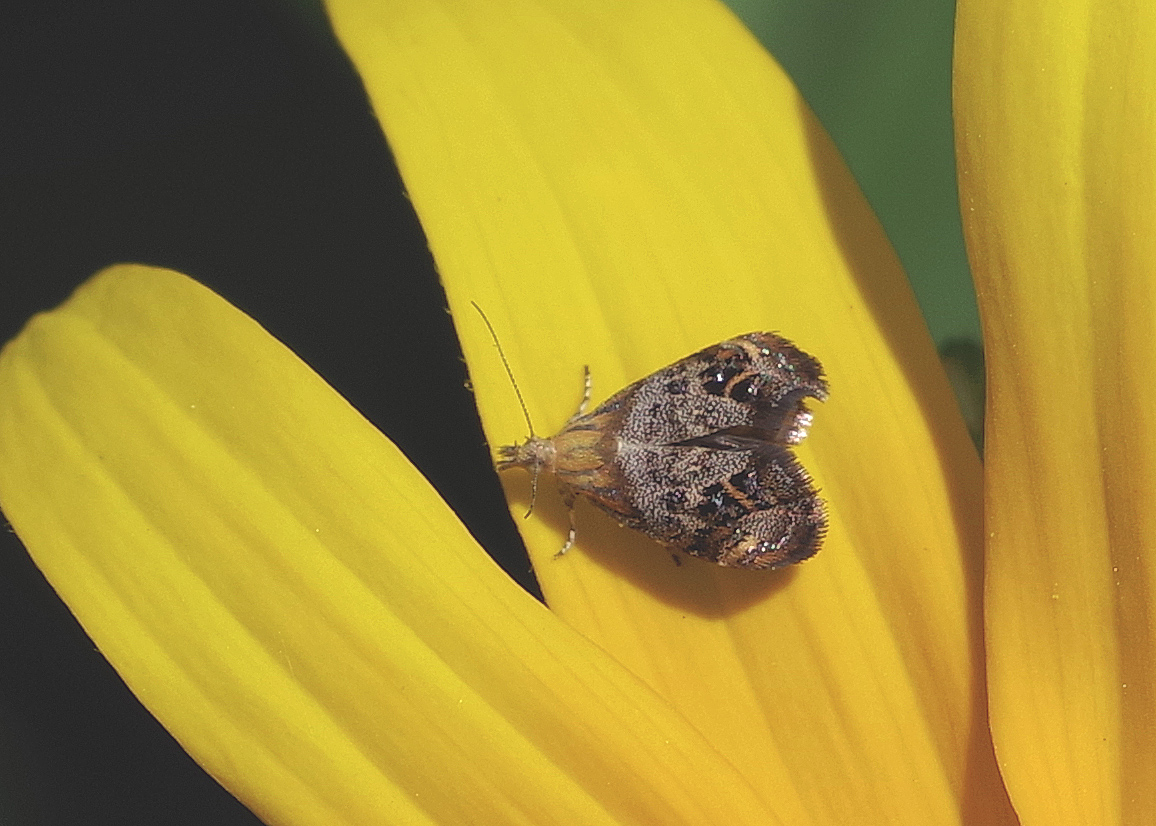
Bug o’the Week – Rosinweed Moth
Howdy, BugFans,
First off, today’s vocabulary word is “microlep” (short for “microlepidoptera”). What’s a microlep? The (somewhat squishy) term applies to moths with a wingspan under 20mm (about ¾”). It’s not a taxonomic or a lifestyle designation – there are microleps across a bunch of different moth families, and they make their livings in a variety of ways – it’s strictly about size.
Rosinweed moths (Tebenna silphiella) (what a little gem!) are a not-well-studied species in a not-well-studied genus in a not-well-studied family, Choreutidae, the Metalmark Moths, a group that (of course) needs revision and that historically has been bounced around, taxonomically.

